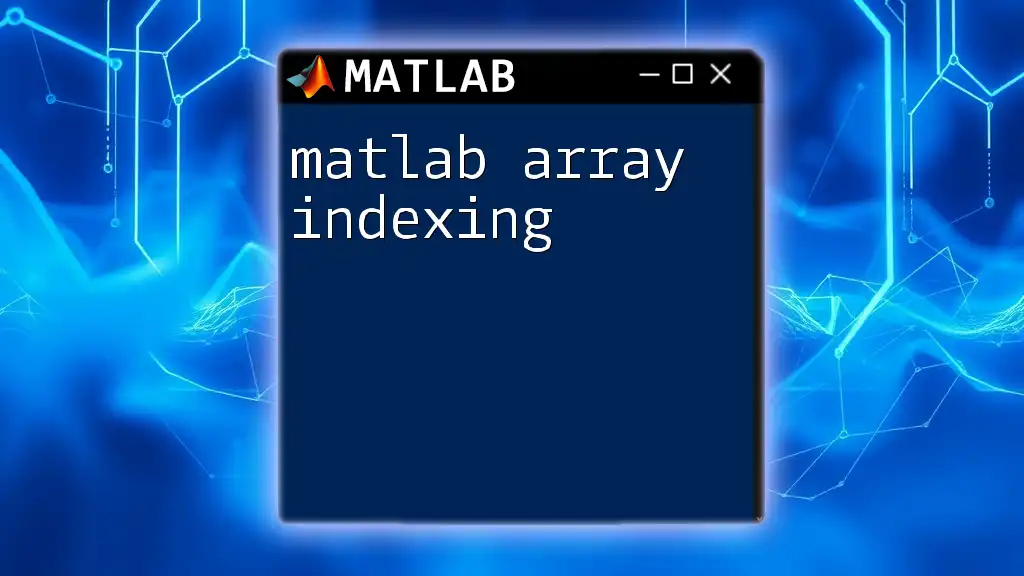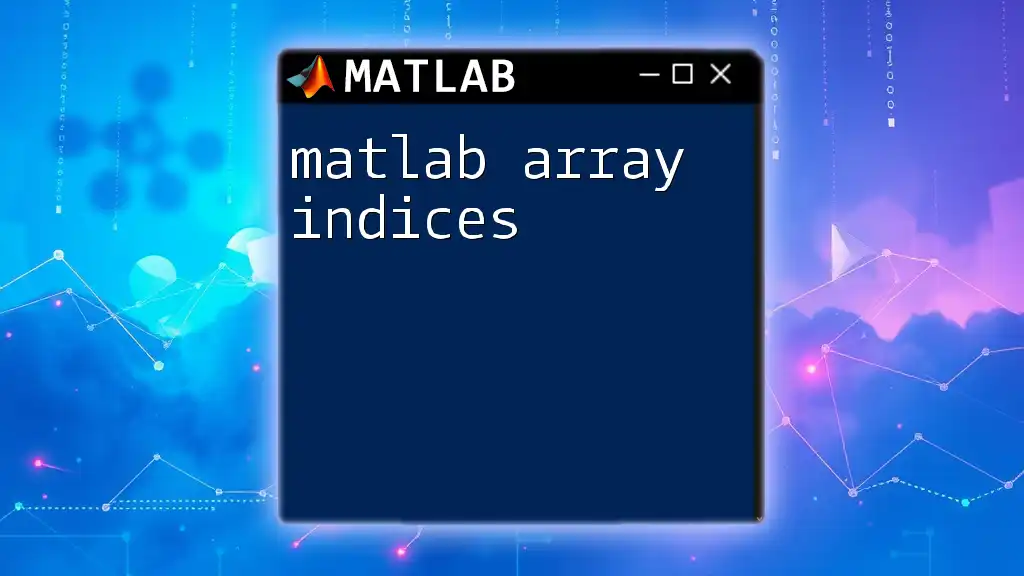In MATLAB, the length of an array can be determined using the `length` function, which returns the largest dimension of the array.
A = [1, 2, 3, 4, 5]; % Example array
len = length(A); % Get the length of array A
disp(len); % Display the length
Understanding Arrays in MATLAB
What is an Array?
In MATLAB, arrays serve as fundamental data structures that allow users to store and organize data efficiently. An array can be a collection of numbers, characters, or strings, and it can be classified into different types:
- 1D arrays (vectors): These are linear collections of elements.
- 2D arrays (matrices): These are rectangular grids of elements arranged in rows and columns.
- Multi-dimensional arrays: These extend the concept beyond two dimensions, allowing for complex data representation.
The importance of arrays in MATLAB lies in their ability to simplify data manipulation, making them essential for any MATLAB user.
How MATLAB Represents Arrays
Arrays in MATLAB are initialized using a specific syntax that may seem daunting at first but becomes intuitive with practice. For instance, you can create a one-dimensional array (vector) and a two-dimensional array (matrix) as follows:
oneDArray = [1, 2, 3, 4, 5];
twoDArray = [1, 2, 3; 4, 5, 6];
These examples show how easy it is to create arrays and how MATLAB inherently understands them, paving the way for efficient data processing.

Measuring Array Length in MATLAB
The `length` Function
The `length` function is a straightforward yet powerful tool for measuring the length of an array. This function returns the number of elements in the largest dimension of the array.
Syntax:
length(A)
For example, consider the following code snippet:
array = [1, 2, 3, 4];
len = length(array); % len will be 4
This example shows how `length` counts the number of elements in a 1D array. It’s crucial to note that when dealing with multi-dimensional arrays, `length` will return the longest dimension:
twoDArray = [1, 2, 3; 4, 5, 6];
disp(['2D array length: ', num2str(length(twoDArray))]); % output: 3
Differences in Lengths for Various Array Types
Understanding how `length` behaves with different types of arrays is essential for efficient programming. With 1D and 2D arrays, the `length` function returns results aligned with our intuitive understanding. To illustrate:
oneDArray = [1, 2, 3];
twoDArray = [1, 2, 3; 4, 5, 6];
disp(['1D array length: ', num2str(length(oneDArray))]); % output: 3
disp(['2D array length: ', num2str(length(twoDArray))]); % output: 3
However, if you need to know the number of rows and columns in a 2D array, the `size` function is more appropriate.
The `size` Function
The `size` function provides detailed dimensions of an array. This function returns two outputs for 2D arrays: the number of rows and the number of columns.
Syntax:
size(A)
For example:
array = [1, 2, 3; 4, 5, 6];
[rows, cols] = size(array); % rows will be 2 and cols will be 3
This function becomes vital when you need more granular control or information about an array's structure, especially for multidimensional arrays.
The `numel` Function
Finally, the `numel` function counts the total number of elements contained within an array, regardless of its dimensions.
Syntax:
numel(A)
Consider the following example:
array = [1, 2, 3; 4, 5, 6];
totalElements = numel(array); % totalElements will be 6
Utilizing `numel` allows you to quickly understand the total data size you are working with, which can be particularly useful in debugging and validation scenarios.

Practical Applications of Measuring Array Length
Validation Checks
Validation checks on array lengths are essential to prevent errors in data processing and manipulation. Particularly when you expect certain dimensions, checking the length before proceeding can save a lot of time.
For instance, you can create a function to validate the input size as follows:
function validateArray(array)
if length(array) < 1
error('Array must not be empty.');
end
end
Using such validation measures can ensure that your functions do not encounter unexpected errors during execution.
Dynamic Programming Scenarios
In many programming scenarios, the length of arrays might change, especially during data collection processes. For instance, if you're continuously collecting user inputs, consider how you can dynamically grow your array and track its length efficiently.
data = []; % Initialize an empty array
while (true)
userInput = input('Enter data (or "exit" to stop): ', 's');
if strcmp(userInput, 'exit')
break;
end
data(end + 1) = str2double(userInput); % Append new data
end
disp(['Total data entries: ', num2str(length(data))]);
Such dynamic array handling is invaluable in real-time data applications.

Common Mistakes and Troubleshooting
Misunderstanding Output from `length`, `size`, and `numel`
A common mistake among beginners is confusing the outputs from `length`, `size`, and `numel`. For instance, using `length` on a 2D array might yield unexpected results if one assumes it returns the count of all individual elements. Always remember that:
- `length` gives you the largest dimension only.
- `size` provides the dimensions in a row-column format.
- `numel` gives you a total count of elements, regardless of dimensions.
Debugging Techniques
When dealing with issues related to array lengths, employing strategies to systematically debug your code can be incredibly useful. Utilize `disp()` or `fprintf()` to output sizes and intermediate results at critical points in your code. This practice will help you track down where something might be going awry.

Conclusion
Understanding and mastering MATLAB array length is a fundamental skill that can dramatically improve your data manipulation and analytical capabilities. Whether you're measuring the size of arrays for validation, coding dynamic data structures, or simply exploring how MATLAB handles arrays, a strong grasp on functions like `length`, `size`, and `numel` will empower your coding experience.
As you continue to learn and explore the intricate functionalities of MATLAB, remember that practice is key. Don’t hesitate to push your boundaries and experiment with various data structures to fully leverage what MATLAB has to offer.

Additional Resources
For those who wish to deepen their understanding, consult MATLAB’s official documentation, immerse yourself in online courses, or consider insightful books focused on MATLAB programming. Joining our newsletter can also keep you updated with tips, tricks, and tutorials tailored to enhance your MATLAB skills.

FAQs
What is the difference between `length` and `size`?
While both functions measure array dimensions, `length` returns the largest dimension only, while `size` returns the size of each dimension. For example, `size(array)` would provide both the number of rows and columns.
Can I use these functions on cell arrays?
Yes, the `length`, `size`, and `numel` functions can also be applied to cell arrays, although they will represent the length and size of the cell structure.
How do I handle empty arrays?
When facing empty arrays, it’s crucial to incorporate validation checks in your code. Checking with `isempty(array)` can help you gracefully exit functions when encountering empty data sets.
This detailed exploration of MATLAB array length should help you confidently navigate array handling in your MATLAB projects!

















